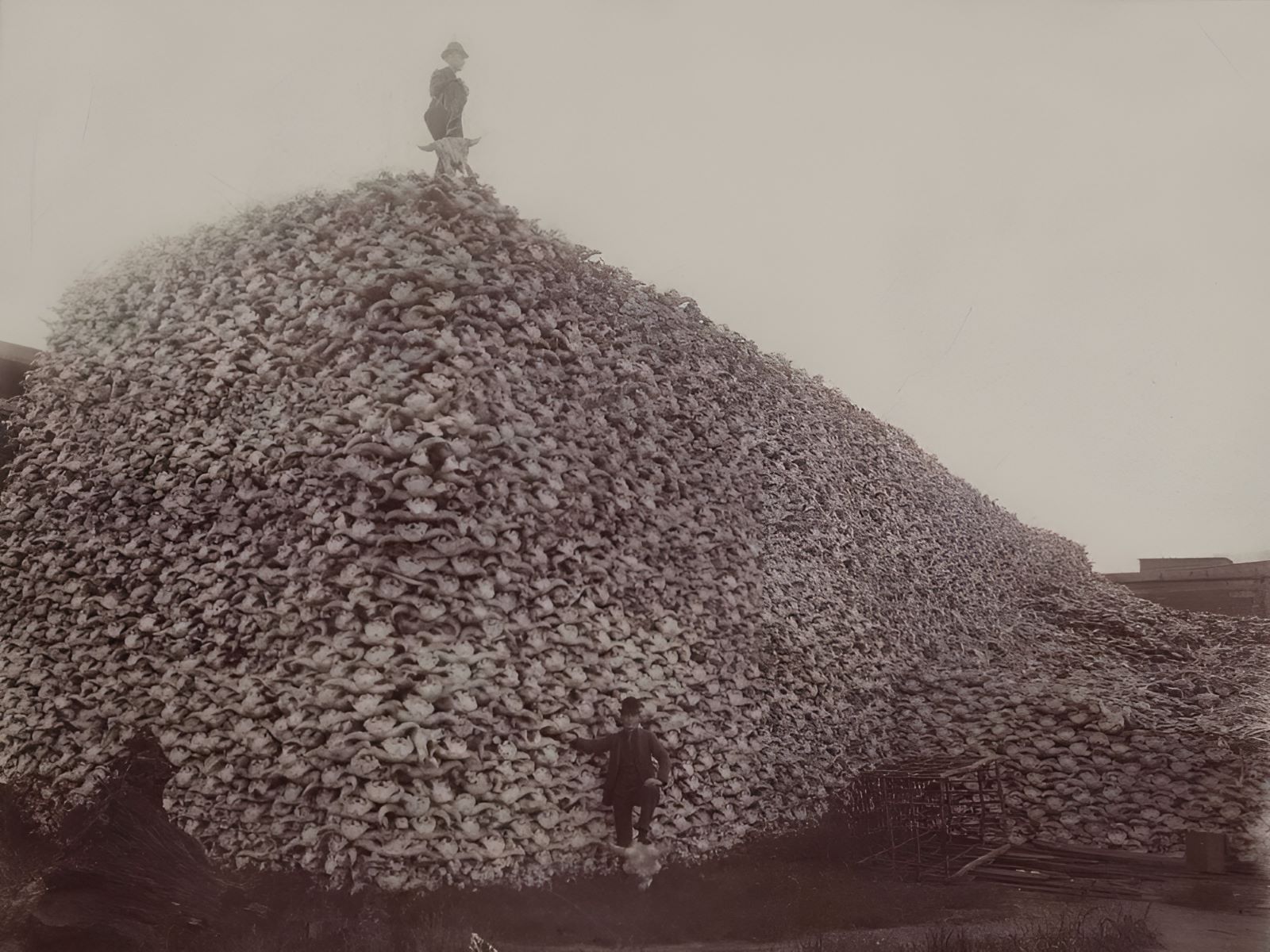
Buffaloes, majestic creatures of the plains, have a history intertwined with human survival and culture. Buffalo slaughter has played a significant role in shaping societies, especially among Native American tribes. These animals provided food, clothing, tools, and even shelter. But why is this practice so pivotal? Buffalo slaughter isn't just about hunting; it's about tradition, respect, and survival. Understanding this practice offers a glimpse into the past and the intricate relationship between humans and nature. Let's delve into 37 intriguing facts that shed light on the importance and impact of buffalo slaughter throughout history.
Key Takeaways:
- Buffalo slaughter intertwines culture, economy, and ethics, impacting communities worldwide. It's a complex topic with historical, environmental, and health implications, shaping the future of sustainable practices.
- Understanding buffalo slaughter's cultural significance, economic impact, and ethical concerns sheds light on its historical context and future trends. It's a multifaceted topic with far-reaching social and environmental implications.
Buffalo Slaughter: A Complex Topic
Buffalo slaughter is a topic that intertwines culture, economy, and ethics. Understanding the intricacies can shed light on its significance and impact.
Cultural Significance
Buffaloes hold a special place in various cultures around the world. Their slaughter often carries deep cultural meanings.
- In Hinduism, buffaloes are sometimes sacrificed during religious festivals like Durga Puja.
- In Nepal, the Gadhimai festival involves the mass slaughter of buffaloes as an offering to the goddess Gadhimai.
- Native American tribes historically relied on buffalo for food, clothing, and tools, making their slaughter a vital part of survival.
- In some African tribes, buffalo slaughter is part of initiation rites and other significant ceremonies.
Economic Impact
Buffalo slaughter also plays a crucial role in the economy of many regions, providing livelihoods and resources.
- Buffalo meat is a significant source of protein in countries like India and Pakistan.
- The leather industry benefits greatly from buffalo hides, which are used to make various products.
- Buffalo horns and bones are often used in the production of handicrafts and traditional medicine.
- In rural areas, the sale of buffalo meat can be a primary source of income for farmers.
Ethical Concerns
The ethics of buffalo slaughter are hotly debated, with arguments on both sides.
- Animal rights activists argue that buffaloes should be treated humanely and oppose mass slaughter practices.
- Some cultures believe that ritualistic slaughter is a form of respect and honor to the animal.
- The conditions in which buffaloes are kept before slaughter often raise concerns about animal welfare.
- There are ongoing efforts to find more humane methods of slaughtering buffaloes.
Environmental Impact
The slaughter of buffaloes also has environmental implications that are worth considering.
- Overgrazing by buffalo herds can lead to soil erosion and degradation.
- The waste produced by slaughterhouses can contaminate local water sources if not managed properly.
- Buffalo farming contributes to greenhouse gas emissions, particularly methane.
- Sustainable practices in buffalo farming and slaughter can help mitigate some of these environmental issues.
Health and Nutrition
Buffalo meat is not just a cultural or economic commodity; it also has nutritional benefits and health implications.
- Buffalo meat is leaner than beef, making it a healthier option for those looking to reduce fat intake.
- It is rich in essential nutrients like iron, zinc, and vitamin B12.
- Consuming buffalo meat can help in muscle building due to its high protein content.
- However, improper handling and storage of buffalo meat can lead to foodborne illnesses.
Legal Regulations
Different countries have various laws and regulations governing buffalo slaughter.
- In India, the slaughter of buffaloes is regulated by state laws, with some states imposing strict bans.
- The United States has specific guidelines for the humane slaughter of buffaloes under the Humane Methods of Livestock Slaughter Act.
- In Australia, buffalo slaughter is regulated to ensure animal welfare and food safety standards.
- Illegal slaughterhouses often operate under the radar, bypassing these regulations and raising ethical and health concerns.
Historical Context
Understanding the history of buffalo slaughter can provide insights into its current practices and significance.
- The near-extinction of the American bison in the 19th century was due to mass slaughter by European settlers.
- Buffalo slaughter has been a part of human civilization for thousands of years, dating back to ancient times.
- The domestication of buffaloes in South Asia led to their widespread use in agriculture and meat production.
- Historical records show that buffaloes were also used in ancient warfare, both as mounts and for their meat.
Technological Advances
Modern technology has influenced the methods and efficiency of buffalo slaughter.
- Automated slaughterhouses have increased the efficiency of buffalo processing.
- Advances in refrigeration and storage have improved the shelf life of buffalo meat.
- Genetic research is being conducted to breed buffaloes that are more suitable for meat production.
- Technology has also improved the traceability of buffalo meat, ensuring better quality control.
Social Implications
The practice of buffalo slaughter affects various social aspects, from community dynamics to individual livelihoods.
- In some communities, buffalo slaughter is a communal activity that strengthens social bonds.
- The industry provides employment opportunities for many people, from farmers to butchers.
- Social stigma can be associated with working in slaughterhouses, affecting the workers' social standing.
- Educational programs are being introduced to teach better practices in buffalo farming and slaughter.
Future Trends
The future of buffalo slaughter is likely to be shaped by changing attitudes, regulations, and technologies.
- There is a growing trend towards more humane and sustainable practices in buffalo slaughter.
Final Thoughts on Buffalo Slaughter
Buffalo slaughter has deep roots in history, culture, and economics. Understanding these aspects helps us appreciate the complexity behind this practice. From the role of buffalo in indigenous cultures to their impact on modern agriculture, these animals have shaped human societies in significant ways.
Buffalo meat provides essential nutrients, and their hides and bones have various uses. However, ethical concerns and environmental impacts can't be ignored. Sustainable practices and humane treatment are crucial for balancing benefits with responsibilities.
Learning about buffalo slaughter opens our eyes to broader issues of animal welfare and environmental stewardship. It's a topic that invites us to think critically about our food sources and the practices behind them. By staying informed, we can make better choices that respect both animals and the planet.
Frequently Asked Questions
Was this page helpful?
Our commitment to delivering trustworthy and engaging content is at the heart of what we do. Each fact on our site is contributed by real users like you, bringing a wealth of diverse insights and information. To ensure the highest standards of accuracy and reliability, our dedicated editors meticulously review each submission. This process guarantees that the facts we share are not only fascinating but also credible. Trust in our commitment to quality and authenticity as you explore and learn with us.


